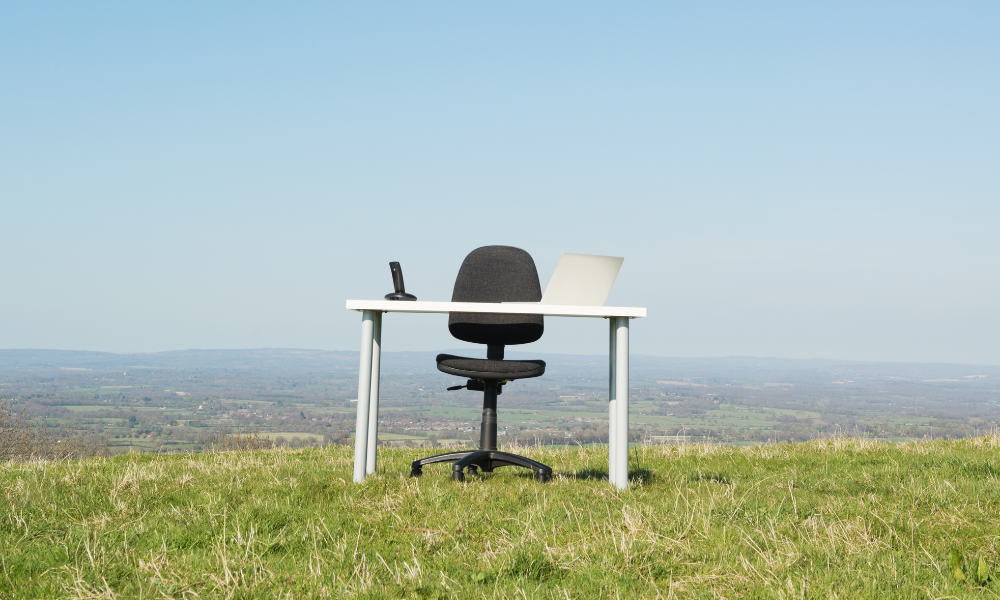
Has working remotely killed creativity?
For many of us, it has become the norm to spend an element of the working week, working from home. It’s widely reported that there are many benefits to remote working, particularly around wellbeing and achieving the all-important ‘work life balance’.
But has working from home killed our creativity?
There are a number of benefits to working remotely whilst still being creative, but similarly, there a number of drawbacks. Whilst this isn’t a simple yes or no answer, weighing up each side is important – particularly depending on your role or profession.
You may also like to take a listen to the following episodes of the Revitalise & Grow podcast:
‘Drawbacks of remote working – has it killed creativity?’
What is digital body language?

Benefits of remote working
Brainstorming in a new environment or one away from the confines of your usual office space can provide new inspiration to develop different ideas and trial new methods of being creative (see our blog on fostering creativity or listen to our podcast episode with the same theme). It can also provide you with valuable space to just think and let your mind wander – another key attribute for being creative.
We are all aware of the many advances of technology and are now pretty well-versed in the use of video calling with clients, customers, colleagues and friends, so this has to be a big benefit of remote working. We can achieve that much-needed face to face time with another member of the team ten or 10,000 miles away. This opens up scope for more colleagues to be involved in the creativity process that may not have been possible previously with the barriers of travel and time.
And all this valuable time saved from travelling can be spent on other tasks to foster creativity, such as researching, keeping abreast of news and trends and other sources to ignite inspiration.

Drawbacks of remote working
On the other side of the fence, what do we lose by not being physically in-person with our team or customers? Particularly in the marketing world, a large percentage of the profession are social people and love being in the presence of their peers. They feed off their energy, body language and thoughts, sparking ideas and taking inspiration from others, to develop an exciting new campaign, story angle or social post – and this is hard to replicate, even when we can see each other’s faces online where we’re often concentrating on reactions and expressions, rather than going with the flow of the creative session.
Often for less experienced members of the team, or those who are a bit more reserved, it can be daunting to offer ideas or suggestions in a group setting – for fear of saying something silly or out of turn – which can be quashed more easily when face to face. Each member of the meeting should be invited for a reason, and therefore their ideas should be encouraged and presented equally. Ensuring everyone is involved is critical. It’s not always the most senior person or the one with the most experience that has the best idea…!

Interesting stats
A recent study by the “Proceedings of the National Academy of Science” studied 5,000 professionals to see how effective their working was remotely, as well as their collective intelligence as a team. The study provided some interesting points:
• The greatest differences in working from home v working together, were how the work was done and who was doing the work. This was linked to the relevant task-related skills and social skills, as well as the social perceptiveness of understanding non-verbal cues, which we naturally do better in person.
• There was little difference in the effectiveness of the work when people were working remotely in groups, compared to working together in the office.
• A lack of serendipity was often experienced – which is that “light bulb” moment, when you come up with a spontaneous, brilliant idea. It is believed that social relationships and human interactions naturally breed creativity.
• Work and home life tend to be “blurred” because our home office isn’t always in another room or somewhere we can physically step away from, and we’re much more inclined to “finish something off” or “do a little bit more” – equating to an average of an extra 2 hours a day.
• Other notable takeaways include: loss of trust and lack of effective communication between team members, and increased workload.
Ultimately, nothing replaces face to face interactions, particularly for creative thinking and discussion. However, video calling when working remotely has helped to bridge the gap and enable us to stay connected when we can’t physically be together. Times are changing and we now demand a more flexible working environment, so we need to ensure we are listening to our team and offering an inspiring and fulfilling environment to create our best work. We also need to be considerate of our teams’ preferences, but with the business’ goals and best interests at heart.
If you’re feeling stuck in a rut with your brainstorming ideas and think some extra minds may be better than one, drop us a line at hello@adpr.co.uk or request a call back.
